A Proud Legacy of Emergency Care
NewYork-Presbyterian Emergency Medical Services began as a team of 14 paramedics in 1973. Today, it is the largest hospital-based EMS provider in the city, racing to the scene when New Yorkers need them most.
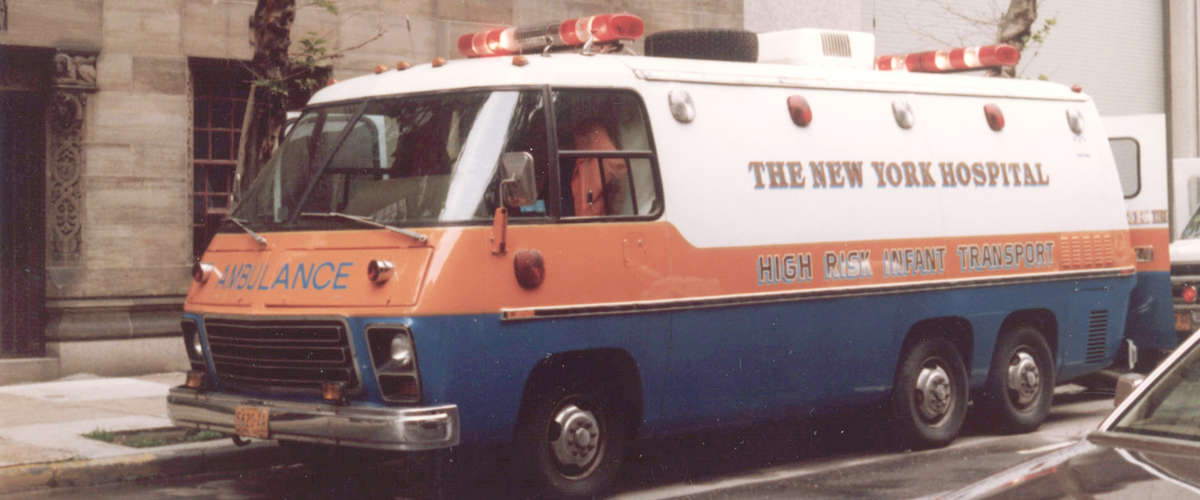

Fifty years ago, NewYork-Presbyterian Emergency Medical Services (NYP-EMS) began with just two ambulances and a team of 14 paramedics. A small but ambitious operation, NewYork-Presbyterian/Weill Cornell Medical Center (what was then New York Hospital) partnered with the Empire State Ambulance Service to form a program that was “the first of its kind in [New York] City to use specially trained emergency paramedics,” according to a 1973 article in The New York Times. “In addition to completing all training requirements for a state license, they were given an additional 125 hours of instruction at New York Hospital before their graduation in March.”
“When this all started back in the 1970s, emergency medicine as we know it today didn’t exist,” explains Dr. Wallace Carter, who began his medical career as a paramedic with the program in 1977 and is today the senior associate medical director for NYP-EMS. “There were no board-certified specialists, and there was no EMS system.”
According to Dr. Carter, it was thanks to those initial efforts to get the program off the ground that led to NYP-EMS becoming a leader and model for emergency care programs across the country. Today, NYP-EMS is the largest hospital-based Emergency Medical Services provider in New York City, with more than 50 state-of-the-art ambulance units and a team of more than 400 paramedics, EMTs, and critical care paramedics.
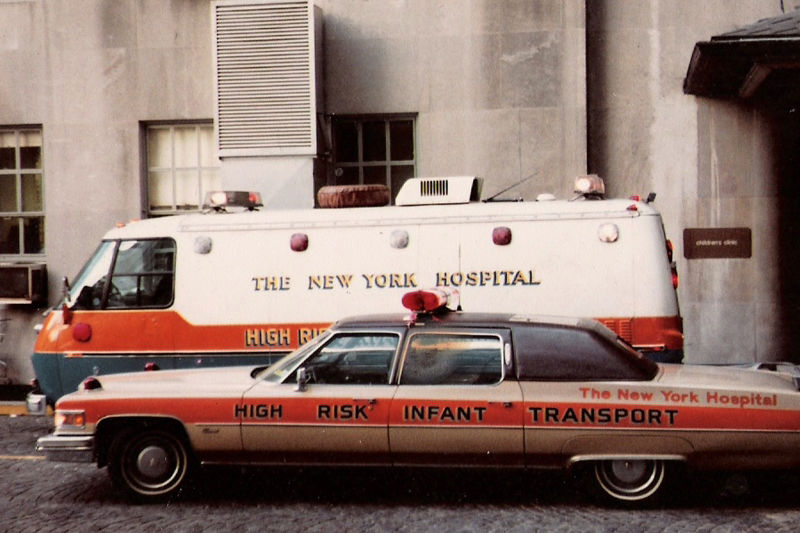
The original “Baby Bus” was a GMC TransMode converted into a three-bed mobile neonatal intensive care unit, complete with a warming table, blood gas analyzer, and generator.
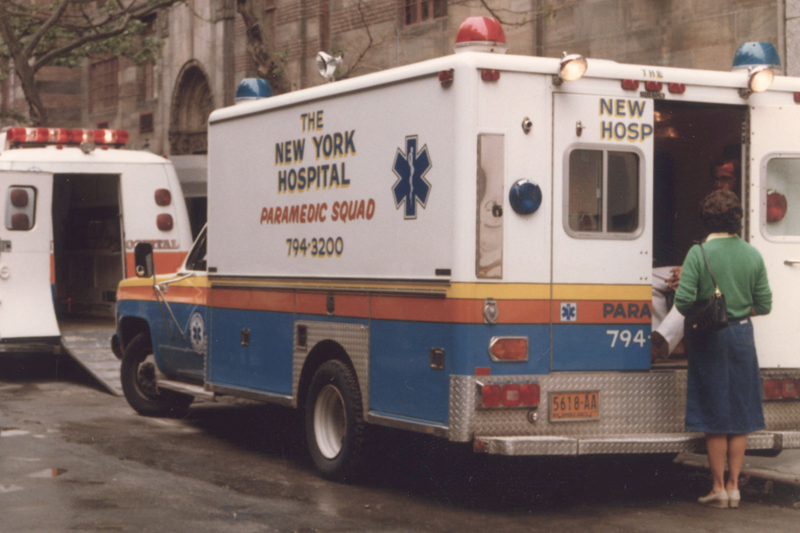
In 1981, NewYork-Presbyterian established its own ambulance system.
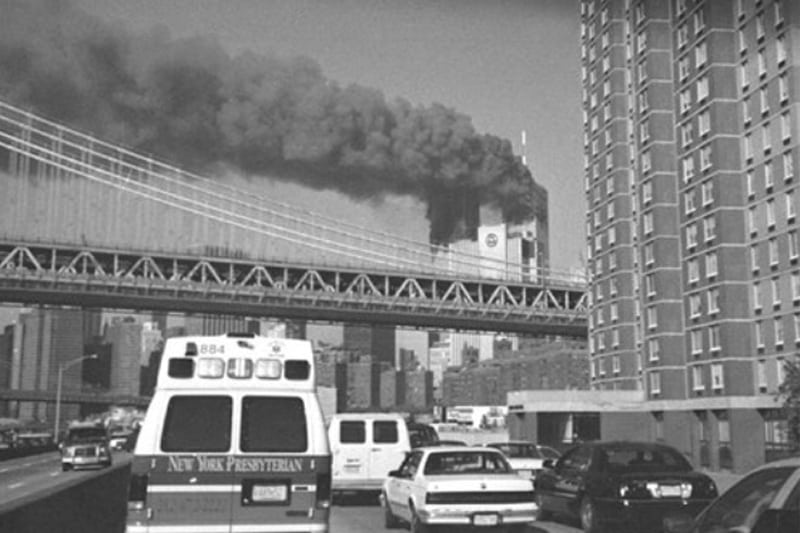
NYP-EMS was among the first on the scene on September 11, 2001.
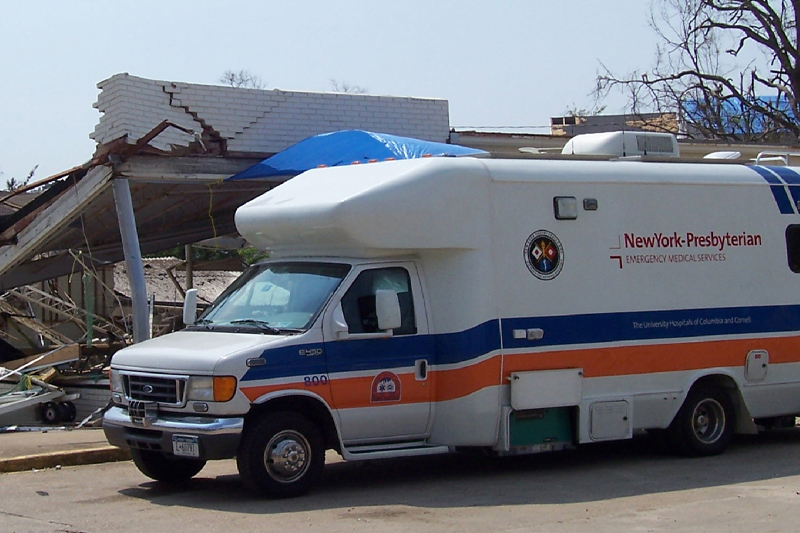
After Hurricane Katrina hit in 2005, NewYork-Presbyterian responded to assist residents of Louisiana, Mississippi, and Alabama.
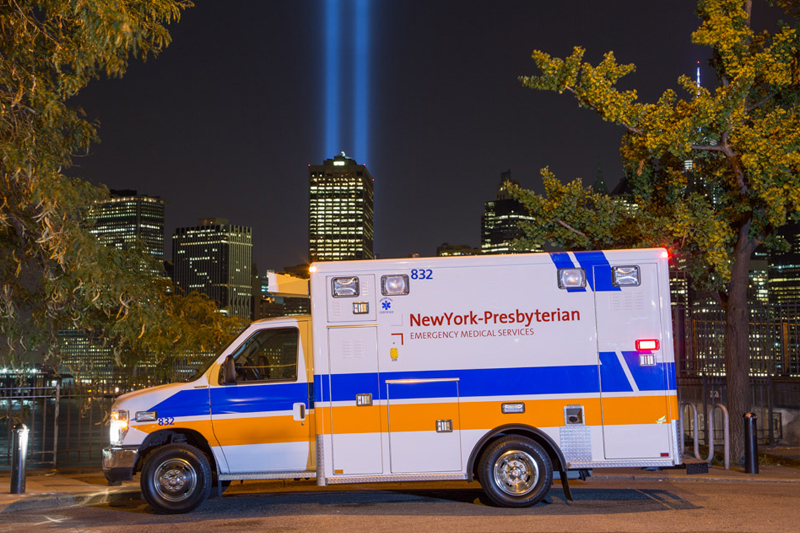
Today, NYP-EMS has 50 ambulances and operates out of six NewYork-Presbyterian campuses.
Growth and Expansion
In 1981, NewYork-Presbyterian established its own official ambulance service, which consisted of a “high-risk infant transport” vehicle, affectionately known as the “Baby Bus.” “Doctors would ride with us to pick up critical babies,” remembers Michael Koppel, manager of EMS Operations for NYP-EMS who started as an EMT in 1989. “And as we advanced, we were able to treat these pediatric patients by ourselves, because we had the necessary training and equipment.”
By 1990, the program was integrated into the 911 system, equipped with four ambulances, and a large mobile emergency room vehicle. In 1998, NYP-EMS became an official enterprise-wide department and began operating out of NewYork-Presbyterian/Columbia University Irving Medical Center and NewYork-Presbyterian Allen Hospital.
Over the next two decades, services expanded to operate out of NewYork-Presbyterian Brooklyn Methodist Hospital, NewYork-Presbyterian Lower Manhattan Hospital, and NewYork-Presbyterian Queens.
“EMS systems have developed significantly over the last several decades.” says Dr. Rahul Sharma, the chief and medical director of NYP-EMS and the emergency physician-in-chief at NewYork-Presbyterian/Weill Cornell Medical Center. “Today, EMS represents so much more than transport to the hospital, and in fact, plays a vital role in emergency care delivery. It is increasingly evident that the future of healthcare is dependent on care beyond the four walls of the hospital. We’ve had to start looking at health care very differently, and EMS is a perfect example of a service that can transform care delivery.”
Helping New Yorkers and Beyond
The recognizable NYP-EMS ambulances and the staff in their signature white pants have raced to the scene of many emergencies and significant events. “Name any major catastrophe in the city of New York, and we’ve been there,” says Dr. Carter, who is also an emergency medicine physician at NewYork-Presbyterian Lower Manhattan Hospital and NewYork-Presbyterian/Weill Cornell Medical Center.
NYP-EMS was one of the first units to respond to the September 11 attacks on the World Trade Center and provided on-site advanced life support units to aid rescuers for the following seven months. Two dedicated members of the NewYork-Presbyterian crew, EMT Mario Santoro and paramedic Keith Fairben, died when the towers collapsed. Today, their shields are displayed on the back of every NewYork-Presbyterian ambulance. “They paid the ultimate sacrifice trying to help strangers,” says John Episcopo, one of NewYork-Presbyterian’s first responders on the scene at the World Trade Center.
When Hurricane Sandy hit the New York area in 2012 and caused devasting flooding in many parts of the city, the team helped evacuate more than 100 patients from what is now NewYork-Presbyterian Lower Manhattan Hospital and the neo-natal ICU at NYU Langone. Trained to respond to natural and manmade disasters in other parts of the country and world, NYP-EMS has also provided on-the-ground medical care to those impacted by Hurricane Katrina in the Gulf Coast and Hurricane Maria in Puerto Rico.
NewYork Presbyterian’s EMS program has come a long way in five decades, always putting patients first and pioneering new advancements. In 2015, the NYP-EMS Critical Care Team won the Guardian of Life Award, given by the New York City Regional Emergency Medical Services Council for outstanding patient care. In 2016, the department launched the first Mobile Stroke Treatment Unit on the East Coast, an emergency vehicle that is outfitted specifically to treat stroke patients.

Today, NYP-EMS has a team of more than 400 dedicated paramedics, EMTs, and critical care paramedics.
“What makes us so special is our role in the continuity of patient care: from responding to the 911 call to bringing them to one of our own hospital beds, to interfacility transport, and even after they go home,” says Keith Herrera, director of NewYork Presbyterian Emergency Medical Services.
Indeed, while NYP-EMS team is known for its rapid response, they are also a key part in providing post-hospital care. In 2018, NewYork-Presbyterian launched its community teleparamedicine (CTP) program, which facilitates follow-up care with patients by sending a paramedic to their home and providing telemedicine visits with an emergency room doctor.
Dr. Sharma says the program has helped revolutionize patient care. “We have done thousands of these CTP visits, which have resulted in significant reductions in hospital readmissions and emergency department visits, as well as improvements in patient satisfaction,” he says.
NewYork Presbyterian’s commitment to helping New York was never more apparent than during the COVID-19 pandemic, when NYP-EMS responded to hundreds of emergency calls daily during the height of COVID.
“EMS was never more essential than during the COVID pandemic, from performing high-risk transports, to conducting testing, to assisting other EMS programs in New York,” says Dr. Sharma. “And when we encounter the next crisis, disaster, or pandemic, EMS will be there to assist the community.”
Adds Dr. Sharma: “I believe our EMS program is at the forefront of leading innovation and advancing emergency care, and that is our ultimate goal.”

